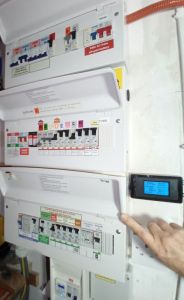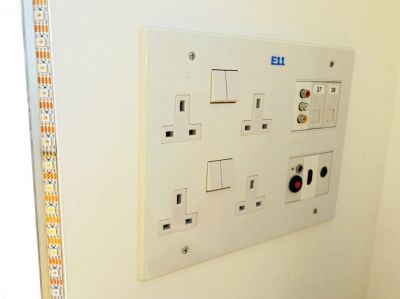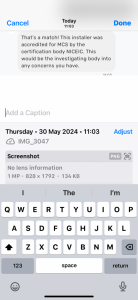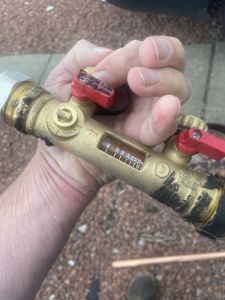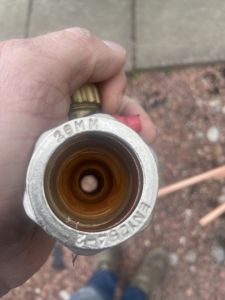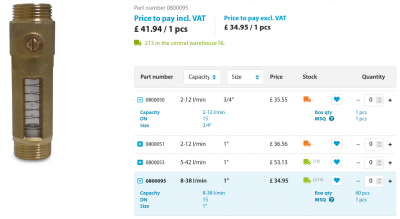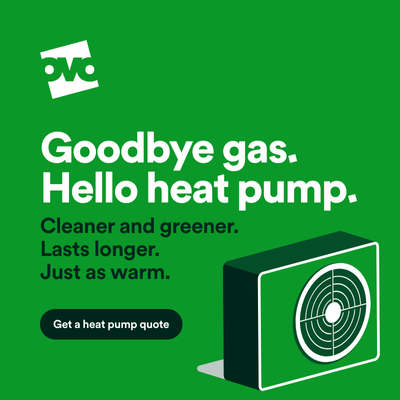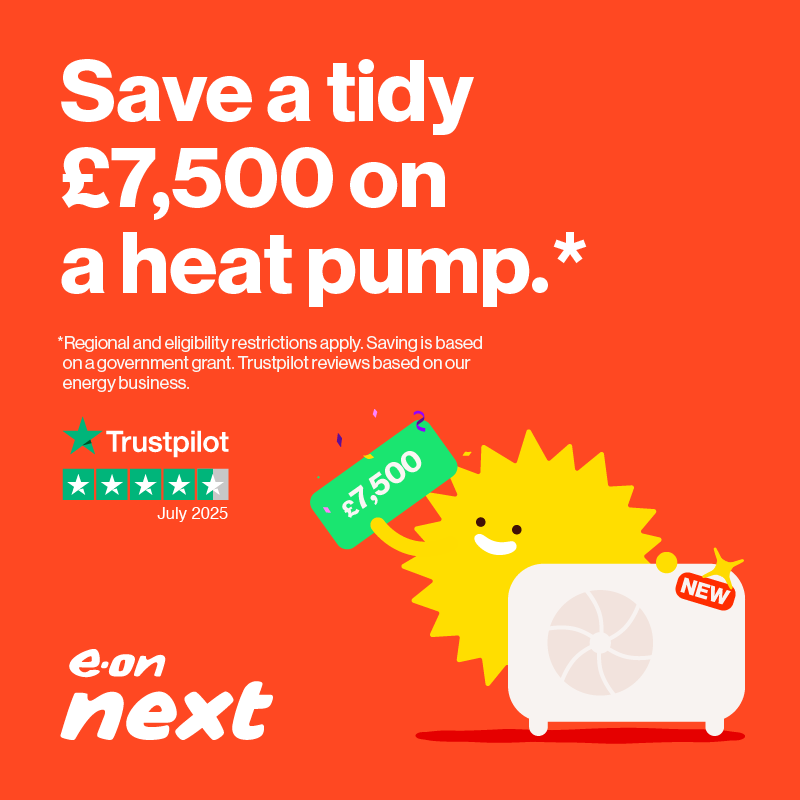Is this a bad installation and is there something wrong with my Samsung heat pump?
Posted by: @david999They say they don’t work to traditional 18th edition regs either, anything goes it just has to work.
Yes, the IET regulations are for internal wiring, from the meter onwards.
There certainly are regulations which apply to the Distribution Grid.
Each DNO will have a number of senior engineers to define specifications and issue Standards which their staff must work to.
Those Standards are increasingly based on an agreed set of regulations administered by the ENA (Electrical Networks Association).
All DNOs are Members of the ENA, and contribute to its running costs.
In practice there are still variations between the types of cable, transmission towers (pylons), transformers and switch-gear in each region.
So DNO engineers can't be constrained to particular equipment and practices which should be universally applied.
They need to be resourceful and inventive when called to a site like yours.
To some extent us members of the public could be more helpful to DNOs once we know more of what does and doesn't need attention.
I have maps of the four DNO Regions for which NGED holds the licences, which tell me the names of each engineer responsible for every sector.
It's obviously information which is not made available to the wider public, but it allows me to send useful messages straight to the relevant person.
I report trees/branches resting on overhead power lines in rural areas, loose stays, and damaged connection boxes.
These are much easier to fix as part of a scheduled visit rather than when they later cause an outage during inclement weather.
You might like to download a copy of the old Guidance for Service Termination Issue Reporting which has since been updated to conform with the Consolidated Metering Code of Practice (CoMCoP) in the RECC Library. This invaluable document describes around 30 different 'fault' conditions (Asset Condition Codes) which a Meter Installer might see when arriving on site. Better still it has charts and full colour photos of what each fault looks like!
An engineer from a DNO might only step inside a house once every 40 years!
In the meantime, it's up to us to notify them if something appears to be wrong.
There is no charge for them to attend.
After all, it's their equipment.
Save energy... recycle electrons!
@transparent I still thought all the tails would be secured and tagged they are all over the place, and I asked the bloke to shut off the power, and he couldn’t see the isolation, then when he did find it I asked him to shut it down and he couldn’t for those cables which won’t move out the way. Surely an isolator should be visible and easily accessible geez. Not that my wife could shut it down if consumer on fire mind you but nice to have it at least facing outwards.
a nice tagged box
Within a cupboard or a meter box, it's unusual to have tails 'secured'.
They tend to get left in free air. That reduces electromagnetic coupling and temperature rise.
Here in England, an isolator between a meter and a consumer unit is optional.
The regulations merely stipulate that there must be a Main Switch, marked as such, within the consumer unit.
A lot of us ask for a separate isolator at extra cost.
That allows an electrician to work safely within the consumer unit, without needing the DNO to attend to 'pull the Service Fuse'.
You may freely apply extra labels to your electricity supply system of course!
Anything which adds clarity to an arrangement is useful, especially years later when you can't remember which trip feeds what!
Here's a photo of my three consumer units as they were last year.
The middle one has the Main Switch, surge suppression and the high-current power circuits.
Note that I've also used colour-coding and a letter for each power circuit, and this is reflected on every socket/outlet throughout the house.
Here's my modular 'lounge plate' labelled E11 in blue.
Whilst my in-house electricity system is more complex than most, I still want it be intuitive to any electrician who sees it.
As for your isolation switch being sideways-on in the cupboard, the only problem with turning it around is the need to have the power turned off to gain access to the mounting screws which are inside.
You could simply screw a wooden block to the left-side of the cupboard and have an electrician re-mount the isolator there facing forwards.
However, as you've now got 3-phase, you could consider building a larger cupboard, install separate isolators for each phase, and add a new consumer unit to divide your circuits across two phases.
You will in any case require your Smart Meter to be replaced with a vector-sum 3-phase meter, and that's slightly wider than the space currently available.
Save energy... recycle electrons!
@transparent I think they may have only used one of the phases to avoid changing the meter. When I get an EV charger perhaps they might change it then.
"They" won't change your meter.
It's up to you to make that request of your Energy Supplier.
Just have a think about how you might use 2 or 3 phases.
Very few domestic devices are 3-phase!
So every device you switch on will cause phase-imbalance at the substation transformer.
Since phase-imbalance causes losses which are presently around 10% nationally(!) we should try to divide our household circuits across the phases so as to achieve even-usage.
That's not easy to do.
A 3-phase EV charger would be a good idea because it uses so much power.
But I don't know if that costs significantly more.
Save energy... recycle electrons!
@transparent into the realms of witchcraft now. Perhaps two meters then one for house and one for Ev charger. Keeps it simple but I guess you are going to say nope you can’t 😊
made enquiries to MCS and they tell me that they don’t regulate installations and another body does it
You'll have difficulty arranging to have two meters for a single location.
Your Energy Supplier would receive a Notification from ECOES, the national database for electricity meters.
It's an anti-fraud check... and no, I'm not going to explain on an open forum why/how it works!
A vector-sum 3-phase meter is able to cope with houses that might be exporting back to the grid on one phase whilst importing on another.
You only get billed for the difference between the three phases.
That arrangement can't work if you have two separate meters on different phases.
If you're looking to balance the phase currents within the house, the obvious way is to recharge a storage battery from whichever phase(s) is/are more lightly loaded.
At present there's no financial incentive to reward consumers for such attention to detail.
But in time we may need to introduce such a system.
It's tricky because less than 1% of substation transformers have any monitoring equipment.
But there are strategies using mathematical modelling which could be effective.
Witchcraft isn't regarded as reliable in the long term.
It only works for a short spell.
Save energy... recycle electrons!
@transparent well heating guys left for the day and I have 36lpm but antifreeze tomorrow and not sure how much we lose.
got rid of manual flow gauge it’s really more restrictive than I imagined
That looks like an Inta flow-gauge, with side branches for Fill and Flush.
So I assume there are other places through which anti-freeze can be added, now that those ports have been removed?
You can get full-bore manual flow-gauges.
you just need the appropriate thread adaptor to fit them into your pipework.
Here's a range offered by Bosta in the Netherlands.
Is now the right moment to suggest changing to a more efficient 3-phase ASHP?
I doubt you could throw that brass flow-gauge at me from where you are!
Save energy... recycle electrons!
@transparent Just ask Evri to deliver it; they would probably throw it through a window! 😉 Toodles.
Toodles, heats his home with cold draughts and cooks food with magnets.
@transparent it’s not going well, it threw up low flow at start up then went up to 36lpm but now it’s running at 31.8. I went around when they left and adjusted my Trv back to 3 setting but I doubt that would make a difference to the primary which now has a upm4xl pump fitted and a 70watt on the rad system.
does flow increase with it getting warmer and are they about to waste 400 quids worth of antifreeze tomorrow if they fill it since the viscosity is going to increase and even less flow
I'm not the right person to answer those points,
... although I don't like the sound of you having a TRV on the system.
The house temperature gets regulated by the flow in the pipes, not by a thermostat turning the pump on/off. Yuch!
You need to hear from someone like @mike-h @kenbone or @ant87
Save energy... recycle electrons!
- 26 Forums
- 2,360 Topics
- 53.5 K Posts
- 232 Online
- 6,026 Members
Join Us!
Worth Watching
Latest Posts
-
RE: Mitsubishi Ecodan R290 10kW performance
@sheriff-fatman The FTC7 with third party cylinder and...
By Ecoste , 2 minutes ago
-

RE: My Powerwall 3 Consumes 3-4 kWh/Day in Self-Consumption: Is This Normal?
@caron, I'm looking into this for you... from my own pe...
By Mars , 2 hours ago
-
RE: New Fogstar 15.5kWh upright solution
SITREP #5 (I think) Milestone completed toda...
By GGW , 4 hours ago
-
RE: Octopus Cosy Heat Pump Owners & Discussion Thread
The FT levels off at either the set point OR the minimu...
By AndrewJ , 4 hours ago
-
RE: MyVaillant Connect Regular Disconnect
Thanks. Yes, if the time is consistently 11pm every nig...
By buckwem , 4 hours ago
-

RE: Speedcomfort radiator fans
My take on Speedcomfort radiator fans: If anyone w...
By Mars , 10 hours ago
-
RE: Midea ASHP – how to set weather compensation
@pash44pump I have yet to come across any Clivet or Mid...
By benson , 10 hours ago
-
RE: Who's your electricity provider and what's your tariff?
@transparent Thanks, this helps. Could it be that St...
By Batpred , 11 hours ago
-
RE: Clivet ASHPs and weather compensation
Simon did share a lot of very helpful advice. On furthe...
By ambris , 11 hours ago
-
RE: Home Assistant vs ESPAltherma.
@majordennisbloodnok Thanks very much.
By Ubert767 , 12 hours ago
-

RE: Setback savings - fact or fiction?
I could, but I think we can do better, by plotting hour...
By cathodeRay , 1 day ago
-
RE: Advice on internal circulation pump noise
Extend the primary branch and make sure you have more t...
By ASHP-BOBBA , 1 day ago
-

RE: External pipework insulation
Oh Dear! that's appalling pipe work, should've been in ...
By dgclimatecontrol , 1 day ago
-

RE: Jokes and fun posts about heat pumps and renewables
By Morgan , 2 days ago
-
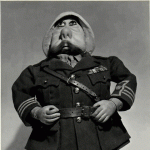
RE: Controlling Daikin Altherma via P1P2 and Home Assistant
On the contrary, @toodles, that’s a lot of help. I’d ne...
By Majordennisbloodnok , 2 days ago
-

Parsnip, Bacon & Coconut Milk Soup
First let me say, I am only a cook because I am human a...
By Toodles , 2 days ago
-
RE: Electricity price predictions
Ben Watts posted on LinkedIn that he had updated this w...
By Judith , 2 days ago
-

RE: The good, the bad and the not that great – my heat pump installation
Small update, Emailed and Spoke to Midea UK and they ...
By Burtis , 2 days ago




